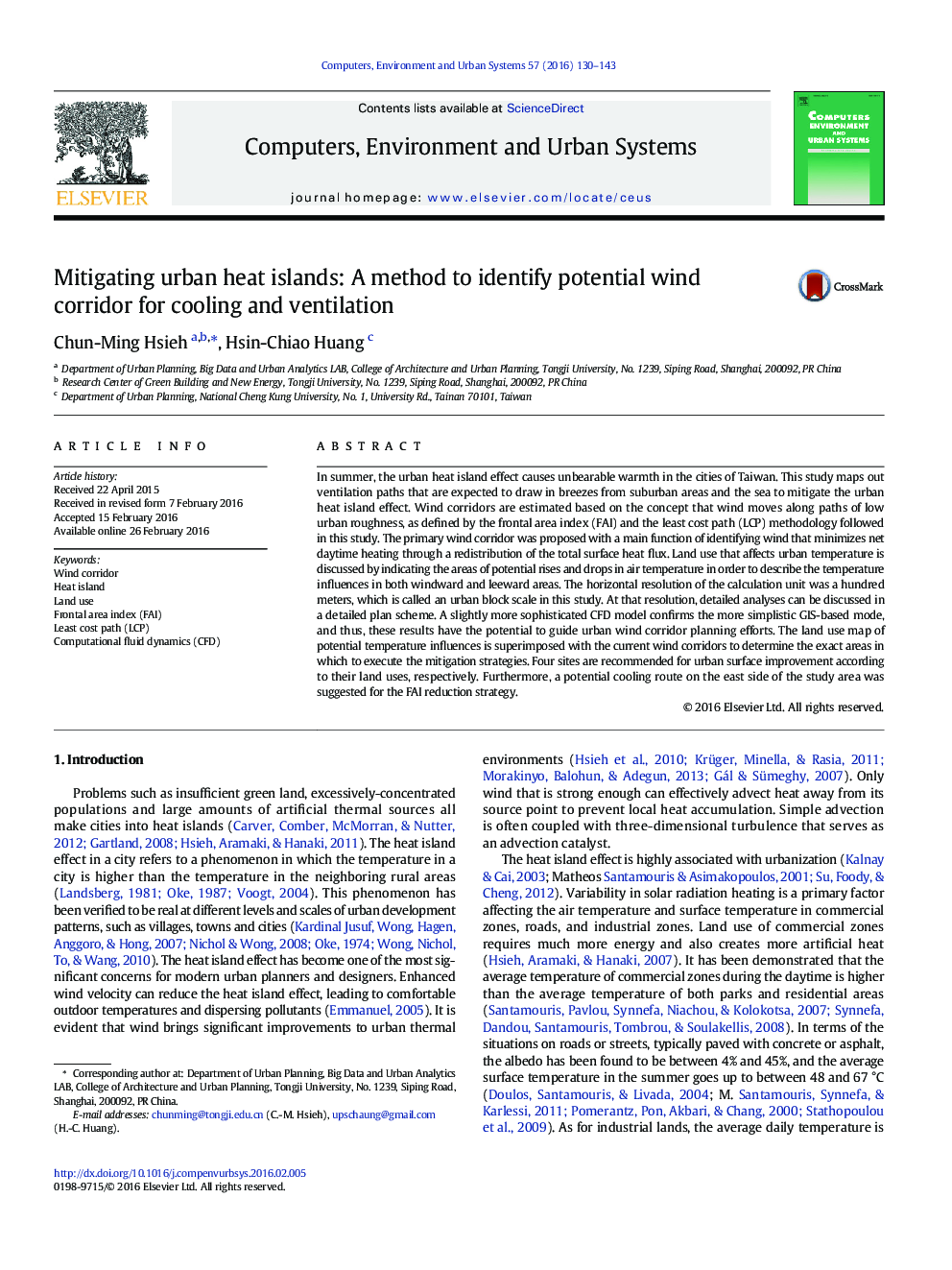| کد مقاله | کد نشریه | سال انتشار | مقاله انگلیسی | نسخه تمام متن |
|---|---|---|---|---|
| 6921906 | 864882 | 2016 | 14 صفحه PDF | دانلود رایگان |
عنوان انگلیسی مقاله ISI
Mitigating urban heat islands: A method to identify potential wind corridor for cooling and ventilation
ترجمه فارسی عنوان
کاهش جزایر گرمایی شهری: یک روش برای شناسایی بالقوه باد برای خنک کننده و تهویه
دانلود مقاله + سفارش ترجمه
دانلود مقاله ISI انگلیسی
رایگان برای ایرانیان
کلمات کلیدی
موضوعات مرتبط
مهندسی و علوم پایه
مهندسی کامپیوتر
نرم افزارهای علوم کامپیوتر
چکیده انگلیسی
In summer, the urban heat island effect causes unbearable warmth in the cities of Taiwan. This study maps out ventilation paths that are expected to draw in breezes from suburban areas and the sea to mitigate the urban heat island effect. Wind corridors are estimated based on the concept that wind moves along paths of low urban roughness, as defined by the frontal area index (FAI) and the least cost path (LCP) methodology followed in this study. The primary wind corridor was proposed with a main function of identifying wind that minimizes net daytime heating through a redistribution of the total surface heat flux. Land use that affects urban temperature is discussed by indicating the areas of potential rises and drops in air temperature in order to describe the temperature influences in both windward and leeward areas. The horizontal resolution of the calculation unit was a hundred meters, which is called an urban block scale in this study. At that resolution, detailed analyses can be discussed in a detailed plan scheme. A slightly more sophisticated CFD model confirms the more simplistic GIS-based mode, and thus, these results have the potential to guide urban wind corridor planning efforts. The land use map of potential temperature influences is superimposed with the current wind corridors to determine the exact areas in which to execute the mitigation strategies. Four sites are recommended for urban surface improvement according to their land uses, respectively. Furthermore, a potential cooling route on the east side of the study area was suggested for the FAI reduction strategy.
ناشر
Database: Elsevier - ScienceDirect (ساینس دایرکت)
Journal: Computers, Environment and Urban Systems - Volume 57, May 2016, Pages 130-143
Journal: Computers, Environment and Urban Systems - Volume 57, May 2016, Pages 130-143
نویسندگان
Chun-Ming Hsieh, Hsin-Chiao Huang,
